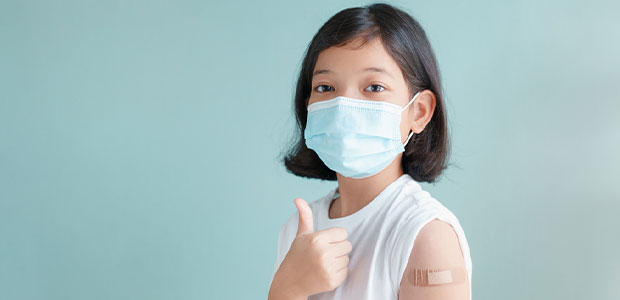
Nearly One Million Kids Now Have Their COVID-19 Shots
A recent poll finds that 27 percent of parents planned to get their kids vaccinated right when the release was announced.
- By Shereen Hashem
- Nov 11, 2021
Kids lining up one by one in children’s hospitals and pop-up clinics to get something they really hate to do: a shot. COVID vaccinations for 5- to 11-year-olds began late last week, increasing over the weekend and early this week. By the end of the day on Wednesday, about 900,000 elementary school-age children will have gotten their first doses of the Pfizer-BioNTech COVID-19 vaccine, a White House official shared. That represents about three percent of children ages five to 11. About 700,000 more have appointments scheduled in the days ahead at pharmacies like CVS and Walgreens.
"This does not include appointments being made, for example, at places like pediatricians' offices, children hospitals and other sites," the official said.
For the White House, this is an early and encouraging sign in the effort to vaccinate these kids, though it is impossible to tell from these initial numbers whether vaccinations will continue increase or hit a plateau, as has happened with adults. Unlike previous expansions of vaccine availability, the Pfizer-BioNTech vaccine for these younger children comes in a smaller dose with different packaging and smaller needles.
Vaccines for this age group couldn't be packaged and shipped until the FDA gave emergency use authorization on October 29, and it has been quick to give ever since. To rapidly reach this new population, the official says Minnesota has set up 1,100 vaccination sites including one at the Mall of America where 1,500 children can be vaccinated a day. Children's hospitals have set up family-friendly events with pets, stuffed animals and adults in costume. New York City has more than 1,000 clinics planned in schools with flexible hours.
Because it is a new program, a wide variety of comparisons are not available. A week after authorization of vaccines for 12- to 15-year-olds, a larger share of the eligible population had gotten their first dose than 5- to 11-year-olds so far. But adolescents were getting the same vaccine doses already widely available to adults in pharmacies and doctor's offices all over the country, so there was no ramp-up time needed.
According to an article, if enough parents vaccinate their children, it could go a long way to restoring normalcy for elementary schools. Many have had to put students on "pause" after close contact with an infected classmate, disrupting in-person learning. Some school districts have even had to shut down entirely for a week or more to try to break the chain of infection.
About the Author
Shereen Hashem is the Associate Content Editor for Occupational Health & Safety magazine.